Korean Banchan and Natural Wine Are a Bright, Funky Pairing
Chef Sunny Lee offers big flavors in small bites, paired with effervescent natural wine.
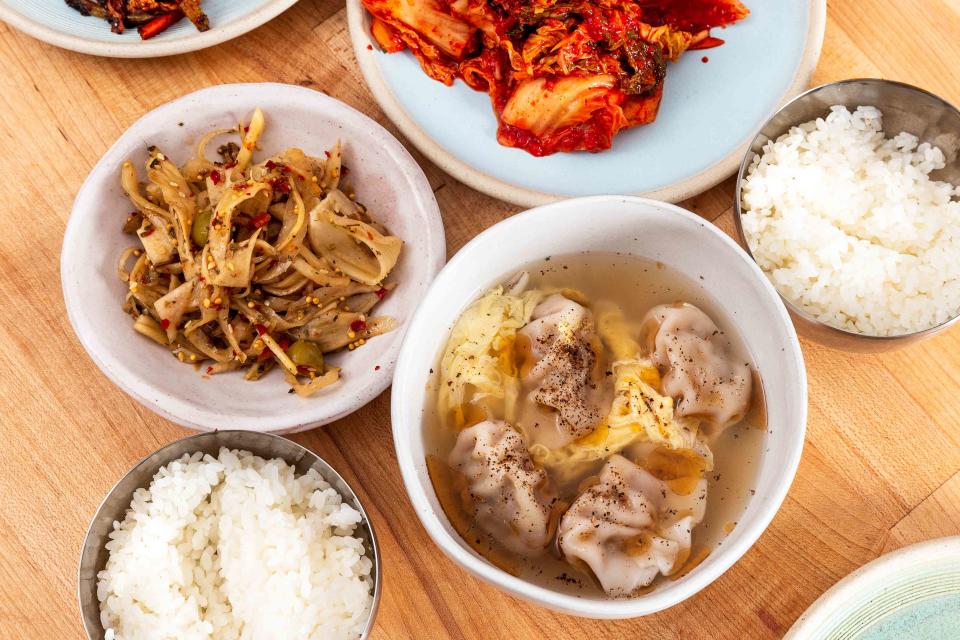
Matt Taylor-Gross
I knew I was at the right apartment in Brooklyn. Above the doorbell was a tiny handwritten sign: “Banchan by Sunny.” Sunny is chef Sunny Lee, and for the past seven years, she has been bringing her ingredient-forward, technique-driven Korean food to New York City diners.
Lee specializes in banchan, a broad category of small dishes that are traditionally served with a meal in Korean cuisine. (The word translates literally as “side dishes.”) In a restaurant setting, banchan are typically included in the price of the meal, “so there is no incentive to make it really good,” Lee says. “But I love cooking Korean food and banchan because it makes me feel like I’m actually taking care of people.”
In her kitchen, she sized up eggplants with a tape measure before chopping, roasting, and marinating them in fish sauce and gochujang for her high-octane Gaji Namul. She contemplated whether she should use a sachet of shredded golden beets and turmeric for cooking down half-moons of daikon in white vinegar or just sprinkle the vibrant mix directly in the pickling liquid for her Danmuji. Eventually, she chose the latter option so not even a little bit of flavor would be lost. “Banchan is how you gauge how much the chef cares about what they do and cook,” Lee explains.
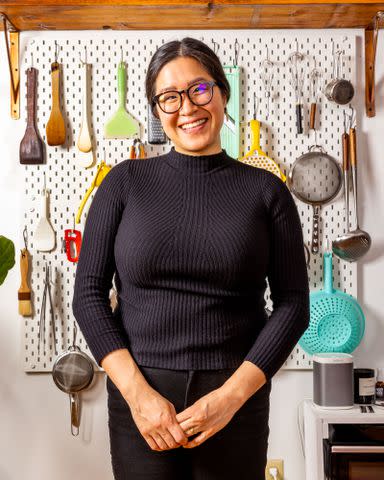
Matt Taylor-Gross
In the near-decade she spent grinding at Blue Hill at Stone Barns, Eleven Madison Park, Estela, and Battersby, she’d often come home after work and make Korean food for herself. This restorative ritual led to her cooking under chef Sohui Kim at Insa, a Korean barbecue restaurant in Brooklyn. Later on, she became a private chef, where she gained an intimate understanding of how her food could impact another person. Banchan by Sunny is the product of those experiences and a reflection of her approach to cooking — one where she wants to share with others the food that has given her so much joy and nourishment.
In the summer of 2021, after a fateful catch-up with chef Jeremiah Stone, she embarked on a six-month residency at Peoples, the wine shop and bar Stone owns with chef Fabián von Hauske Valtierra. Lee partnered with Daryl Nuhn, Peoples’ managing partner, to pair the fermented flavor and effervescence of her banchan with natural wine. “It’s a nice symbiotic relationship,” Lee says. “Wine is preservation of a food at its peak and tells you about its terroir. Kimchi is the same.”
It was the longest continuous pop-up Lee had ever done, and she loved every minute of it. Lee would walk around the bar, explaining how diners could build their own bites of ssäm (Korean lettuce wraps). She’d experiment with new recipes, based on memories from her childhood, and ask diners what they thought. She’d watch them relish the food that has always comforted her.
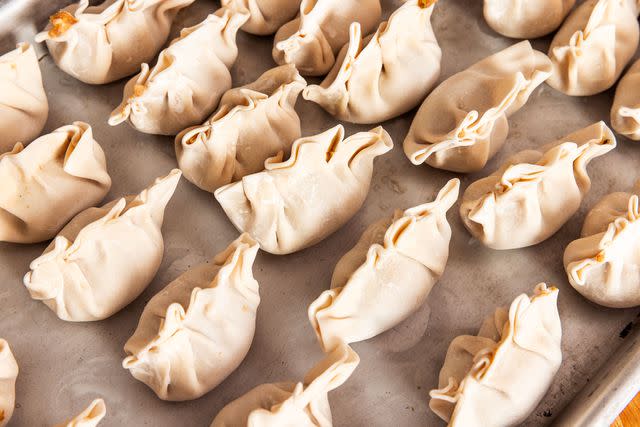
Matt Taylor-Gross
Now, Lee continues to pop up at restaurants around New York City, and she is working on turning Banchan by Sunny into a brick-and-mortar concept, finally melding the ambitious cooking that drives her with the food that sustains her and so many others.
“In every other instance of my cooking experience, it was always: I’m cooking what I really want to cook, or I’m doing my work, which I also love, but they were never the same thing. This was the first time that I ever cooked in a restaurant where I could be the fullest version of myself,” Lee says. “There is nothing I love more than cooking Korean food and sharing it with friends.”
The best bottles to drink with banchan
Sunny Lee suggests pairing these natural wines with her banchan.
2021 Ruth Lewandowski Rosé ($27)
This rosé blend is fruit-forward, bright, and light in texture, which pairs nicely with the richness of Lee’s Gaji Namul (Gochujang-Marinated Eggplant).
2021 Alessandro Viola Note Di Bianco Grillo ($30)
To pair with Danmuji (Golden Beet and Radish Pickle), Lee reaches for this more robust, skin-contact white from Sicily, which can hold its own next to the sweet, acidic pickle.
Danmuji (Golden Radish and Beet Pickle)
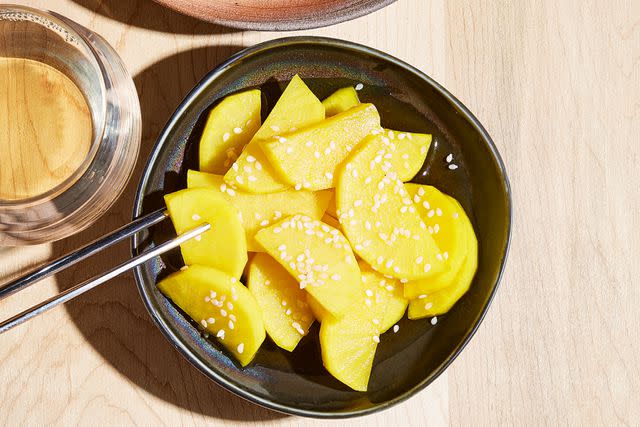
Jennifer Causey / Food Styling by Chelsea Zimmer / Prop Styling by Christine Keely
Danmuji, a sweet yellow radish pickle, is commonly served in Korean-Chinese cuisine. Lee’s homage to banchan forgoes the usual drying and fermentation steps to deliver a quick, turmeric-stained pickle with notes of ginger and black pepper.
Gaji Namul (Gochujang-Marinated Eggplant)
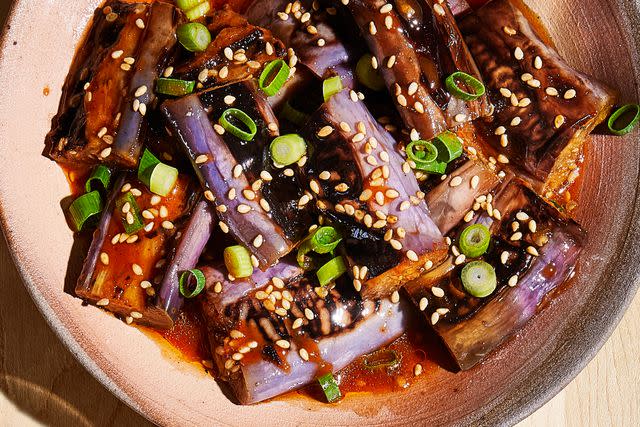
Jennifer Causey / Food Styling by Chelsea Zimmer / Prop Styling by Christine Keely
Gaji namul, one of the most classic Korean banchan, consists of beautiful batons of steamed marinated Chinese eggplant. In her version of the dish, Lee starts by caramelizing the eggplant to impart deep, savory flavor. Serve this piquant, garlicky, and umami-forward banchan with a hot bowl of rice or as a side dish with roast chicken, grilled pork, or roast salmon.
For more Food & Wine news, make sure to sign up for our newsletter!
Read the original article on Food & Wine.

